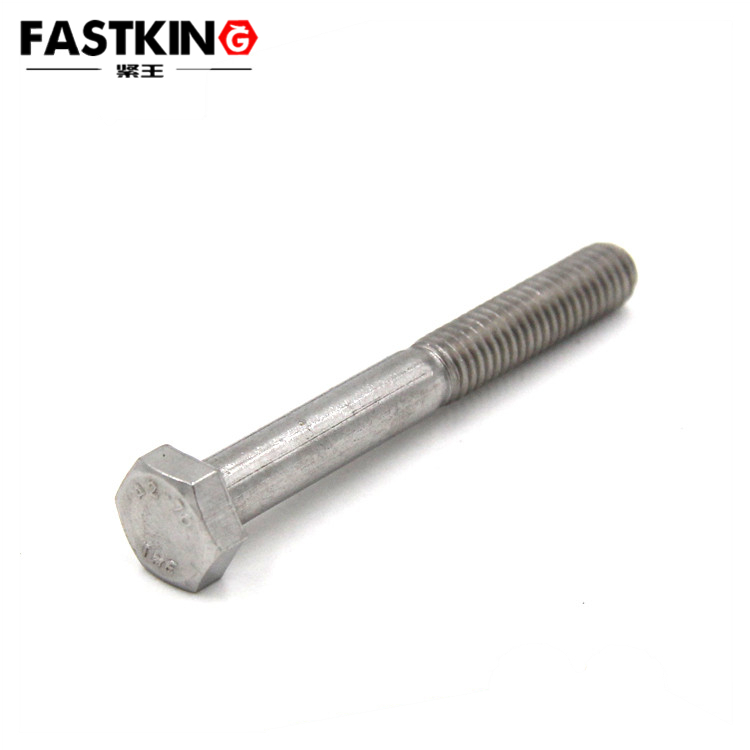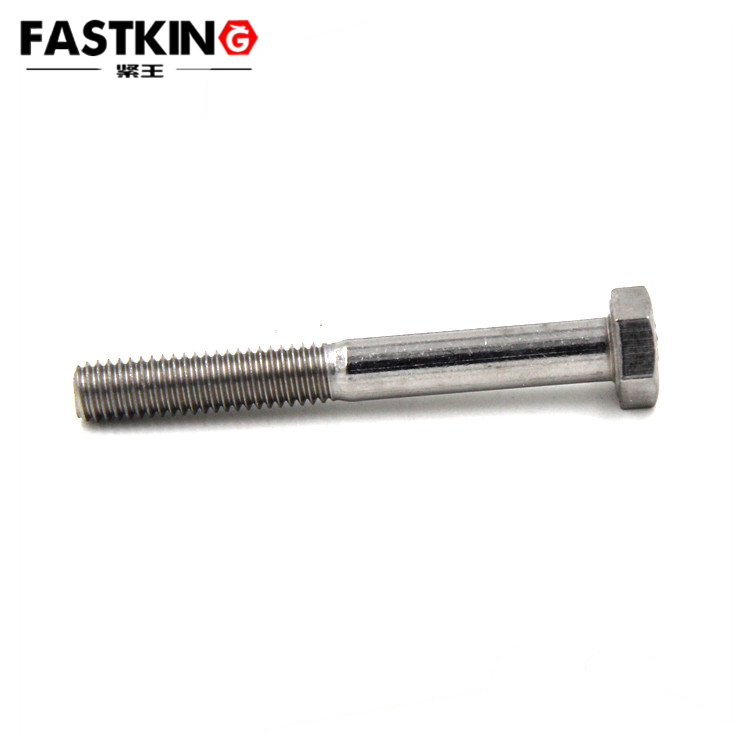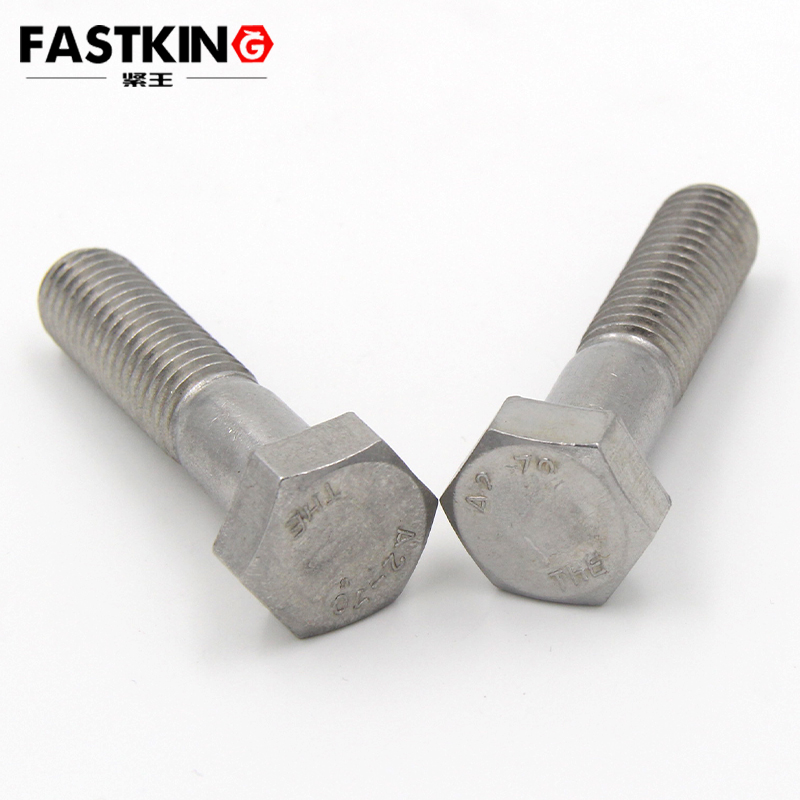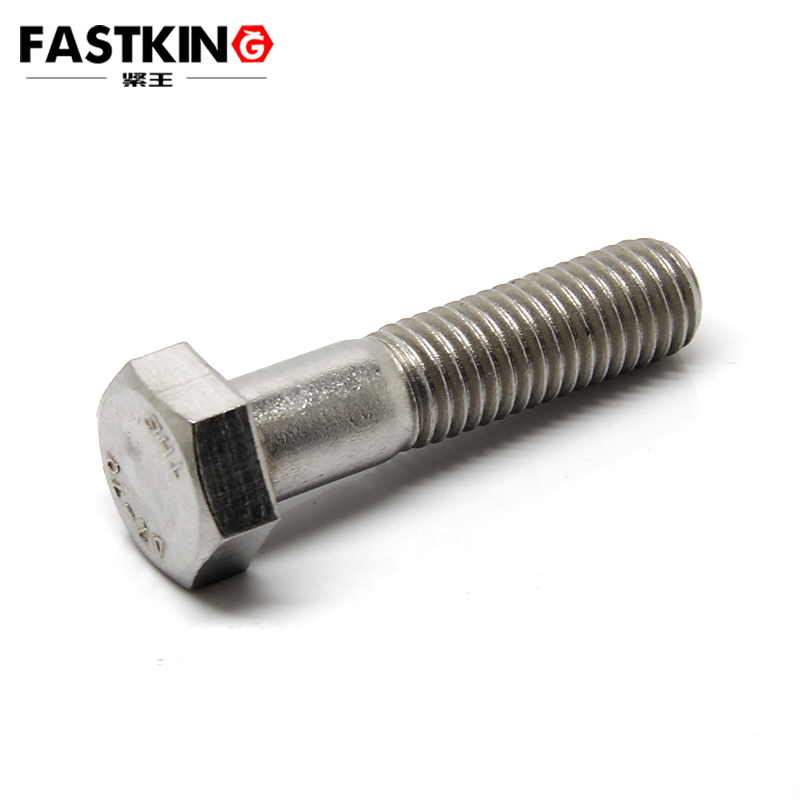I. Structural Features of Hex Head Semi-Threaded Bolts
As the name suggests, hex head semi-threaded bolts have a hexagonal head that allows for easy tightening and loosening with wrenches and other tools. Unlike fully threaded bolts, semi-threaded bolts have threads only on one end, while the other end is a smooth shank. This design offers unique benefits in practical applications. The smooth shank of the semi-threaded bolt can reduce friction between the bolt and the connected parts, improving assembly efficiency. Additionally, the shank can serve as a positioning element, ensuring that the connected parts maintain accurate relative positions during assembly, thereby enhancing the stability and reliability of the entire assembly structure.

II. Application Scenarios for Hex Head Semi-Threaded Bolts
Mechanical Manufacturing and Equipment Installation
In the field of mechanical manufacturing, hex head semi-threaded bolts are commonly used for the assembly of machines such as machine tools, motors, and reducers. For example, in the connection between the bed and the column of a machine tool, hex head semi-threaded bolts can securely fasten the two components together. The smooth shank ensures precise alignment between the bed and the column, guaranteeing the machining accuracy of the machine tool. During motor installation, semi-threaded bolts can be used to fix the motor base to the mounting bracket. The semi-threaded design prevents excessive compression of the motor housing during tightening, protecting the motor from damage while ensuring a tight connection between the motor and the bracket. This helps maintain the stability of the motor during operation and reduces the impact of vibration on equipment performance.
Automotive Manufacturing
The automotive manufacturing industry has extremely high requirements for the precision and reliability of component assembly. Hex head semi-threaded bolts play a crucial role in the assembly of key parts such as the vehicle chassis and engine components. In the installation of the suspension system in the vehicle chassis, hex head semi-threaded bolts are used to connect the suspension arms to the body brackets. Since the suspension system is subjected to complex forces during vehicle operation, the smooth shank of the semi-threaded bolt can effectively distribute the stress, preventing the bolt from loosening or being damaged due to uneven force distribution. In the assembly of engine components, such as the connection between the cylinder head and the engine block, hex head semi-threaded bolts can ensure the seal between the cylinder head and the block, preventing coolant and oil leaks while guaranteeing the normal operation of the engine.

Construction and Steel Structure Engineering
In construction and steel structure engineering, hex head semi-threaded bolts are often used for the connection of steel structure frames, curtain wall installation, and the fixation of large equipment foundations. For steel structure frames, hex head semi-threaded bolts can be used to connect beams and columns. The semi-threaded design ensures connection strength while reducing friction between the bolt and the connected parts, improving assembly efficiency. During curtain wall installation, semi-threaded bolts can be used to fix the curtain wall frame to the main building structure. The smooth shank ensures the flatness and verticality of the curtain wall frame, thereby enhancing the aesthetic appearance of the building. Additionally, in the fixation of large equipment foundations, hex head semi-threaded bolts can securely fasten the equipment to the foundation, preventing the equipment from shifting due to vibration during operation and ensuring stable operation.
III. Usage Methods of Hex Head Semi-Threaded Bolts
Tool Selection
When using hex head semi-threaded bolts, it is necessary to select the appropriate tools based on the bolt specifications. Hex wrenches are the preferred tools for tightening and loosening hex bolts. Hex wrenches come in various sizes, and the correct size should be chosen according to the hexagonal dimensions of the bolt head. For larger bolts, socket wrenches or torque wrenches can be used to provide greater torque to ensure the fastening effect of the bolt. In special situations, such as working in confined spaces, adjustable-angle wrenches or offset wrenches can be selected to better adapt to complex assembly environments.

Assembly Steps
Cleaning and Inspection: Before assembly, the threaded parts of the bolt and the connected parts should be cleaned to remove oil, rust, and debris, ensuring the cleanliness and smoothness of the threads. At the same time, inspect the bolt for damage, deformation, or thread defects. If any issues are found, replace the bolt promptly to avoid affecting the assembly quality and structural strength.
Pre-assembly: Insert the smooth shank of the hex head semi-threaded bolt into the hole of the connected part, ensuring a good match between the bolt and the hole diameter. The shank should pass through the hole smoothly while maintaining accurate relative positioning between the bolt and the connected part. If there are gaps between the connected parts, select suitable washers to adjust and ensure a tight and reliable connection.
Tightening the Bolt: Use the appropriate wrench to tighten the bolt. During tightening, apply force gradually to avoid damaging the bolt or deforming the connected parts by tightening too abruptly. For assemblies that require a specific torque value, use a torque wrench and strictly follow the specified torque requirements. When tightening the bolt, pay attention to the tightening sequence. For structures with multiple bolts, tighten them symmetrically or in a crisscross pattern to ensure even force distribution on the connected parts and prevent local stress concentration that could damage the components.
Inspection and Confirmation: After tightening the bolt, inspect the assembled structure to confirm that the bolt is tightened properly and that there are no gaps or looseness between the connected parts. Check whether the bolt head is in good contact with the surface of the connected part. If necessary, make appropriate adjustments. For important assembly structures, use a marker to make marks on the bolt head and the connected part to facilitate regular inspections during subsequent use and to promptly detect any loosening of the bolt.
Precautions

Torque Control: Controlling the torque when tightening hex head semi-threaded bolts is crucial. Excessive torque can damage the bolt or the connected parts, while insufficient torque cannot ensure a reliable connection. Therefore, during assembly, strictly follow the torque values specified in the design or relevant standards. For assemblies without specific torque requirements, estimate the torque reasonably based on the bolt size and application scenario, but avoid over-tightening.
Anti-loosening Measures: In situations where there is significant vibration or complex forces, hex head semi-threaded bolts may loosen. To prevent loosening, take measures such as using spring washers, double nut locking, or applying anti-loosening adhesive. Spring washers generate counterpressure through their elastic deformation to prevent nut loosening. Double nut locking involves tightening two nuts against each other, creating a mutual restraint that prevents nut loosening. Anti-loosening adhesive forms a sticky film on the bolt threads, increasing the friction between the threads to prevent the bolt from loosening.
Material Matching: When selecting hex head semi-threaded bolts, choose the appropriate bolt material based on the material of the connected parts and the application environment. For example, when connecting stainless steel parts, prioritize stainless steel bolts to prevent electrochemical corrosion caused by material mismatch. In humid or corrosive environments, select bolts with corrosion-resistant properties, such as galvanized or stainless steel bolts, to extend the bolt's service life.
Hex head semi-threaded bolts, as common fasteners, are widely used in various fields such as industrial production, mechanical assembly, automotive manufacturing, and construction due to their unique structural features and broad applicability. Proper selection and use of hex head semi-threaded bolts can effectively improve assembly efficiency and ensure the stability and reliability of the connection structure, providing strong support for the normal operation of various equipment and projects. With the continuous development and innovation of industrial technology, the application scope of hex head semi-threaded bolts will further expand, and their importance in modern industry will become increasingly prominent.
